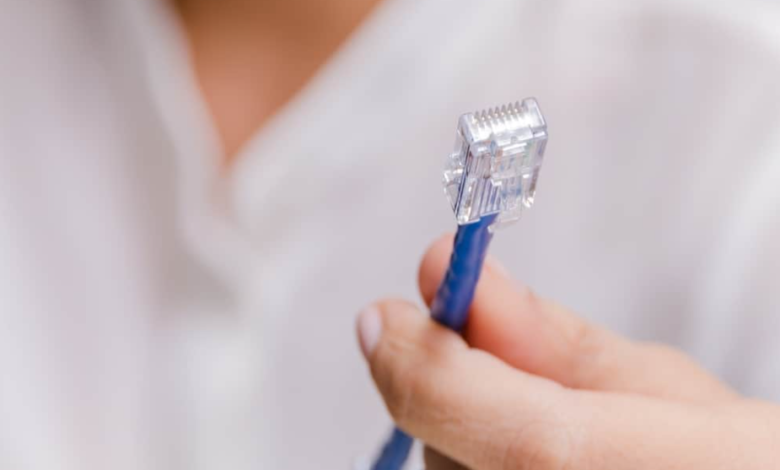Difference Between Outdoor and Indoor Cat6 Cable

Understanding the difference between outdoor and indoor Cat6 cable is crucial for ensuring optimal performance and longevity of your network. Whether you’re setting up a business network in New York or enhancing your home internet, the type of Cat6 cable you choose can significantly impact your network’s reliability and speed. For those in need of a durable and high-performance option, considering a Cat6 Plenum 1000ft Cable might be a wise investment. This article will delve into the key distinctions between outdoor and indoor Cat6 cables, their unique characteristics, and the best applications for each.
What is Cat6 Cable?
Cat6 cable, short for Category 6, is a standardized twisted pair cable for Ethernet and other network physical layers. It is backward compatible with Cat5 and Cat5e standards, providing higher performance and improved data transmission speeds. This makes it a popular choice for both residential and commercial networks, supporting speeds up to 10 Gbps over short distances.
Key Features of Cat6 Cables
Speed and Bandwidth: Cat6 cables offer a performance of up to 250 MHz, making them ideal for high-speed internet and networking.
Structure: Typically made of four twisted pairs of copper wire. Cat6 cables reduce crosstalk and improve signal quality compared to their predecessors.
Shielding: Cat6 cables are available in unshielded (UTP) and shielded (STP) versions. Shielded cables are more suitable for environments with high interference.
Indoor Cat6 Cable
Indoor Cat6 cables are designed for use within buildings, primarily focusing on safety and performance in a controlled environment.
Characteristics of Indoor Cat6 Cable
Insulation Material: Indoor cables are usually made with PVC (Polyvinyl Chloride) or LSZH (Low Smoke Zero Halogen) jackets. These materials are not designed to withstand harsh outdoor conditions but are fire-resistant and produce less smoke in case of a fire.
Flexibility: Indoor cables are more flexible and easier to run through walls and ceilings, making installation simpler.
Cost: Generally, indoor Cat6 cables are less expensive than outdoor ones due to the use of less durable materials.
Applications of Indoor Cat6 Cable
Indoor Cat6 cables are ideal for setting up networks within homes, offices, and other buildings. They are suitable for connecting computers, servers, and other network devices within the same structure. For instance, using a Cat6 Plenum 1000ft Cable can be particularly advantageous in large office buildings where plenum spaces (areas used for air circulation) are present, as these cables meet stringent fire safety standards.
Outdoor Cat6 Cable
Outdoor Cat6 cables are built to withstand the elements, providing reliable performance in various weather conditions and environmental factors.
Characteristics of Outdoor Cat6 Cable
Durability: These cables come with a rugged jacket, typically made of UV-resistant polyethylene (PE), which protects against moisture, temperature changes, and physical damage.
Shielding: Many outdoor Cat6 cables include an additional layer of shielding to protect against electromagnetic interference (EMI) and radio frequency interference (RFI), ensuring stable signal transmission.
Waterproofing: Outdoor cables often feature a gel-filled or water-blocking tape to prevent water ingress, which is crucial for installations in areas prone to flooding or heavy rain.
Applications of Outdoor Cat6 Cable
Outdoor Cat6 cables are essential for connecting buildings, extending networks to outdoor structures like security cameras or Wi-Fi access points, and any other application where the cable will be exposed to the elements. They are particularly useful in New York, where weather conditions can be extreme, from hot summers to cold, snowy winters.
Key Differences Between Indoor and Outdoor Cat6 Cable
Jacket Material: The most apparent difference is the jacket material. Indoor cables use PVC or LSZH, while outdoor cables use PE for better protection against the elements.
Cost: Outdoor cables tend to be more expensive due to the additional materials and construction techniques required to withstand outdoor conditions.
Installation Environment: Indoor cables are best suited for climate-controlled environments. While outdoor cables are designed for use in varying weather conditions and rougher environments.
Longevity: Outdoor cables are built to last longer in harsh conditions, making them a more durable option for exterior installations.
Choosing the Right Cat6 Cable for Your Needs
When deciding between indoor and outdoor Cat6 cables, consider the following factors:
Installation Environment: If the cable will be used indoors and won’t be exposed to harsh conditions, an indoor Cat6 cable will suffice. However, for any outdoor installations, an outdoor Cat6 cable is necessary.
Safety Requirements: For installations in plenum spaces or areas with strict fire codes. Using a Cat6 Plenum Cable is essential for compliance with safety standards.
Budget: While outdoor cables are more expensive, the investment is worth it for their durability and reliability in outdoor conditions. For indoor use, cost-effective PVC or LSZH cables are sufficient.
Performance Needs: Both indoor and outdoor Cat6 cables offer high-speed performance. However, ensure the cable you choose meets your network’s bandwidth and speed requirements.
Conclusion
Understanding the difference between indoor and outdoor Cat6 cables is crucial for setting up a reliable and efficient network. Indoor cables are ideal for safe, controlled environments, while outdoor cables are designed to endure harsh weather conditions and physical wear. By considering the specific requirements of your installation environment, safety standards, budget, and performance needs, you can choose the right Cat6 cable for your network.
For businesses in New York, reliable cabling solutions like the Cat6 Plenum 1000ft Cable from Monk Cables can ensure your network is both efficient and safe. Investing in the appropriate Cat6 cable type not only guarantees the longevity of your network but also provides peace of mind knowing that your connections are secure and reliable.



